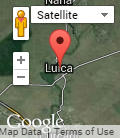
Project
The village of Luica is situated in Călăraşi County, in the Western part of the Mostiştea Plain, at the fork in a valley.
One of the prominent features of this region is the “Sârbi” archaeological site , a registered historical monument, located on a terrace of the Rasa River, where traces of a 2nd to 1st century BCE settlement were discovered.
In 1624, Luica was attested to in documents under the name of Mihai Vodă. This settlement is situated at a relatively small distance away from Radovanu, where important remains of the Boian, Gumelniţa and other Neolithic-Eneolithic cultures were discovered by Dr. Eugen Comşa. Other important finds, belonging to the 1st millennium C.E. were uncovered there by Dr. Maria Comşa.
Throughout history, some of the crafts specific to this area have included weaving and clay modelling. These ancient occupations could be revived and cultivated among the children of the community, and thereby promote folk knowledge preservation through ongoing interest. In order to do that, in the following period we would acquire a traditional loom with all its parts, from the Luica community so that, under the coordination of specialized women from the village and of the teaching staff from the National University of Arts in Bucharest (NUA), several pupils could be trained to practice this craft. Also with the help of the specialists from NUA, we would make glass engravings and clay models, the latter by using ancient techniques specific to the local Boian and Gumelniţa cultures. Such activities could also serve as a tribute to Maria and Eugen Comşa, the archaeologists who carried out research for 30 years in this region.
The results of these activities, including the objects created by the children, would be presented as an exhibition and popularized in both the village and throughout the county.
